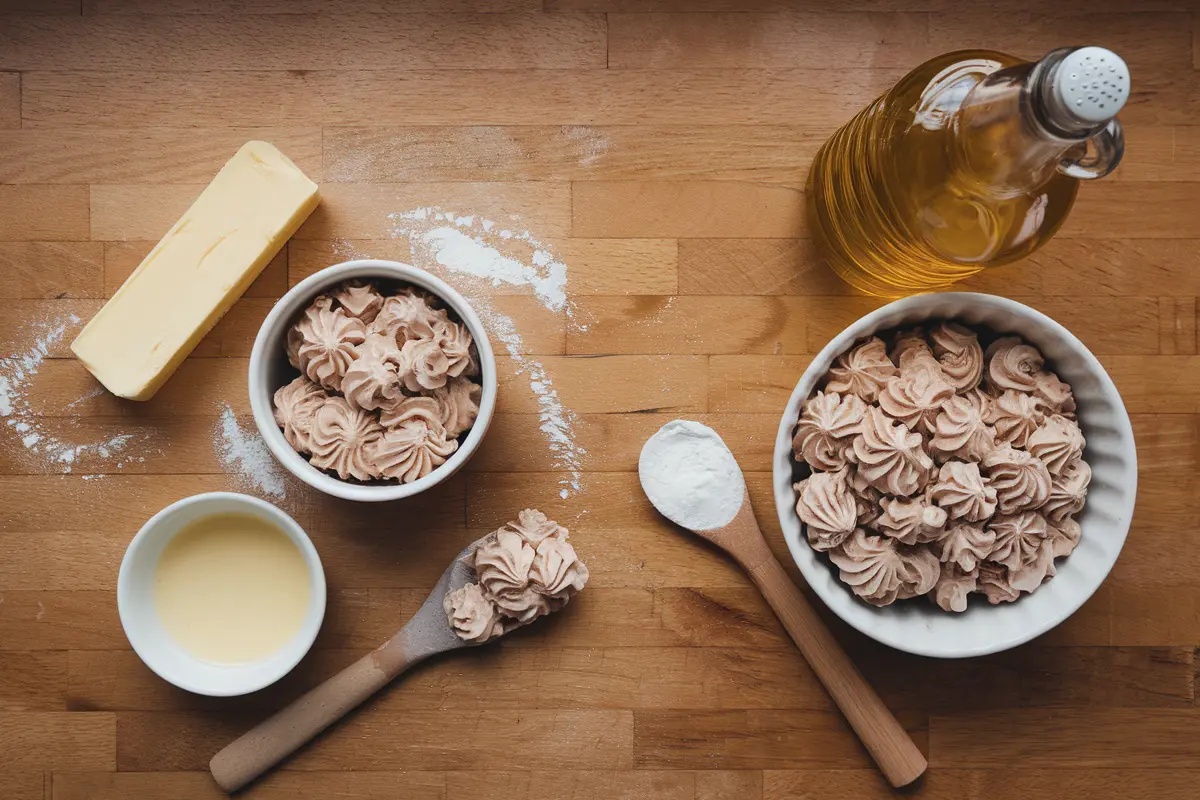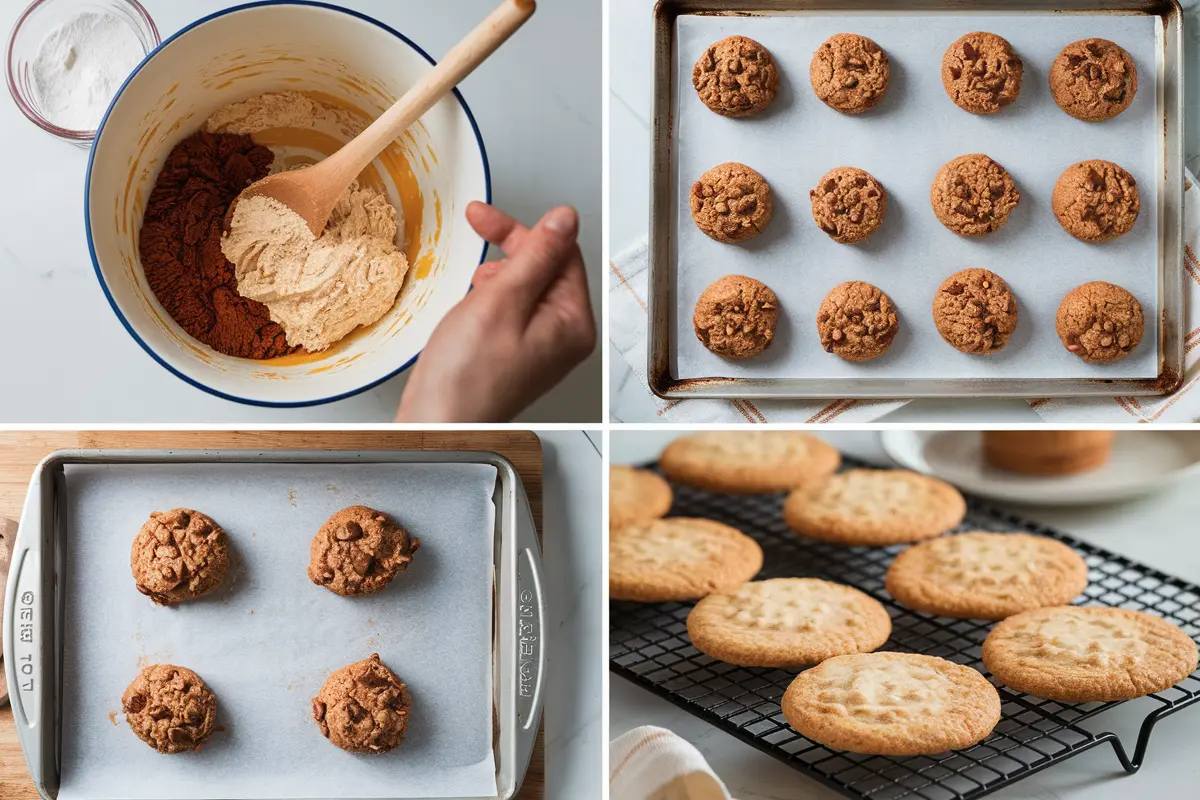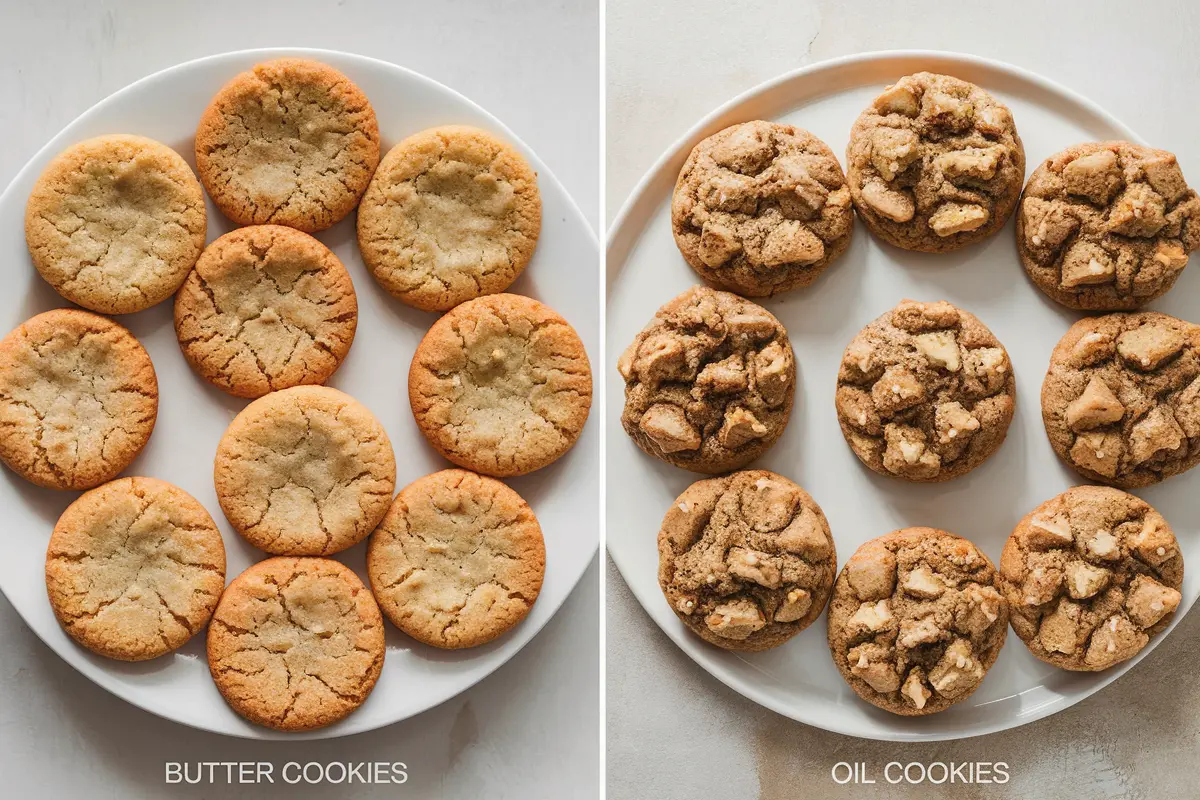When making cake mix cookies, the choice between using butter or oil can significantly affect the final result. Both fats play crucial roles in baking, influencing texture, flavor, and appearance. This article explores the benefits and drawbacks of each, helping you decide whether to reach for the butter or the oil next time you’re baking cookies.
Understanding the Role of Fat in Baking
Fat is a vital ingredient in baking that adds moisture, enhances flavor, and affects the texture of baked goods. It provides tenderness by creating a barrier that prevents the formation of gluten, resulting in softer cookies. Fats also act as flavor carriers, making the cookies richer and more flavorful.
When baking with fats like butter or oil, it’s important to understand how they differ. Using butter adds a rich, creamy taste due to its milk solids, while oil, which lacks water and milk solids, often results in a more neutral flavor. Both can be used in cake mix cookies, but each has unique properties that influence the final product.
The Science Behind Butter and Oil in Baking
The choice between butter and oil in baking is not just about taste; it’s also about baking science. Butter is composed of roughly 80% fat, 18% water, and 2% milk solids. The water content in butter contributes to the leavening process when the water evaporates, creating steam that helps cookies rise and achieve a lighter texture. On the other hand, oil is 100% fat and contains no water, leading to a denser, moister crumb.
Oil’s liquid consistency ensures a uniform distribution throughout the batter, keeping cookies moist longer. Butter, due to its semi-solid state, allows for air pockets to form when creamed with sugar, providing a fluffier and more structured texture. Understanding these properties helps bakers choose the right fat based on the desired outcome for their cookies.

Butter in Cake Mix Cookies: Pros and Cons
Benefits of Using Butter
- Richer Flavor: Butter imparts a delicious, rich taste that enhances the overall flavor profile of the cookies. It is especially preferred when making cookies where the buttery flavor is meant to shine.
- Better Texture: Butter contributes to a slightly crispy exterior while maintaining a soft interior, which many people prefer for their cookies.
- Visual Appeal: Cookies made with butter often have a golden-brown color due to the caramelization of milk solids.
Drawbacks of Using Butter
- Shorter Shelf Life: Butter-based cookies tend to dry out faster and may not stay as fresh as those made with oil.
- Preparation: If a recipe requires creaming butter with sugar, it can be more labor-intensive compared to using oil.
According to Handle the Heat, butter is about 80% fat and contains water, which helps with leavening. This results in a cookie that is not only flavorful but also has a delicate crumb.
Oil in Cake Mix Cookies: Pros and Cons
Benefits of Using Oil
- Moist and Tender Cookies: Oil, being 100% fat, creates a very moist and tender texture, which is ideal for those who prefer soft cookies.
- Longer Shelf Life: Cookies made with oil generally stay fresh longer than those made with butter. This is especially useful for storing cookies for extended periods or shipping them.
- Easier Preparation: Oil is easier to mix directly into the batter, making it a more straightforward choice when you want to save time in the kitchen.
Drawbacks of Using Oil
- Less Flavor: Since oil has a neutral taste, it doesn’t contribute much to the flavor profile of the cookies. This might not be ideal for those looking for a richer, buttery taste.
- Denser Texture: The absence of water in oil means that it does not contribute to leavening, resulting in a denser cookie.
For a deeper understanding of the impact of using oil versus butter, The Cravory provides insights into how the texture and taste of cookies differ with each fat source. Oil cookies are often denser and chewier, making them suitable for those who prefer a moist, fudge-like texture.
Different Types of Oils for Baking Cookies
Not all oils are created equal. Different oils can provide varied textures and flavors to your cookies:
- Vegetable Oil: A common choice due to its neutral flavor. It keeps cookies soft and moist.
- Canola Oil: Also neutral in flavor and low in saturated fat, making it a healthier option.
- Coconut Oil: Adds a subtle coconut flavor and solidifies at room temperature, providing a unique texture.
- Olive Oil: Rarely used in baking cookies due to its strong flavor, but can work well in savory or citrus-flavored cookies.
When substituting butter with any of these oils, be mindful of their flavor profiles and health benefits.
Understanding the Health Impacts
Health-conscious bakers may lean towards oils due to their lower saturated fat content compared to butter. For example, canola oil and olive oil are known for their heart-healthy monounsaturated fats, which can be a better option for those monitoring cholesterol levels. Meanwhile, butter, with its saturated fats, might be less favorable for those with heart health concerns. That said, some studies suggest that in moderate amounts, butter’s natural fats are not as harmful as once thought, especially when consumed within a balanced diet.
How to Substitute Butter for Oil and Vice Versa
When substituting butter for oil in cake mix cookies, a straightforward 1:1 ratio can be used. However, it is essential to consider that butter contains water and milk solids. Therefore, when replacing oil with butter, it’s often recommended to use slightly more butter to achieve a similar fat content.
On the other hand, when replacing butter with oil, use only ¾ cup of oil for every cup of butter to maintain the balance of fat in the recipe. This adjustment ensures the cookies don’t become too greasy or dense.
Practical Tips for Substitution Success
- Add Water When Using Oil: To mimic the steam-leavening effect of butter, add a tablespoon of water when substituting oil for butter.
- Control Cookie Spread: Cookies made with oil tend to spread more. Chill the dough for 30 minutes before baking to minimize this effect.
- Flavor Enhancers: Add a splash of vanilla extract or a pinch of salt when using oil to enhance the flavor, compensating for the lack of butter’s depth.
Vegan Alternatives to Butter and Oil in Cake Mix Cookies
For those who prefer vegan baking, there are alternatives to both butter and traditional oils:
- Coconut Oil: As mentioned, coconut oil is a great vegan substitute that adds moisture and a slight coconut flavor.
- Avocado Oil: Offers a healthy, neutral-flavored fat perfect for vegan cookies.
- Nut Butters: Almond butter or peanut butter can add a unique flavor and texture while keeping the cookies vegan.
These alternatives are perfect for those looking to avoid dairy or animal-based ingredients while still achieving delicious cookies.
Comparisons in Other Baked Goods
Beyond cookies, the choice of butter vs. oil also plays a significant role in other baked goods:
- Cakes: Oil-based cakes tend to be moister and stay fresh longer, while butter-based cakes are richer in flavor.
- Brownies: Oil makes for a fudgier, chewier brownie, while butter brownies are softer with a more pronounced butter flavor.
- Cupcakes: Similar to cakes, oil-based cupcakes are moist but less flavorful compared to their butter counterparts, which are tender and flavorful.
Knowing how these fats perform across different baked goods can help bakers decide which to use based on their preferences.
Expert Opinions on Butter vs. Oil in Baking
Baking experts suggest combining both butter and oil for the best of both worlds. Butter provides superior flavor, while oil contributes moisture and tenderness. According to Handle the Heat, some bakers prefer this blend, particularly when crafting cookies that are both chewy and flavorful.
Experimenting with Ratios
Some bakers suggest using a ratio of 60% butter to 40% oil for an ideal balance of flavor and moisture. This ratio allows for the richness of butter without the cookies becoming too dry. Experimenting with different proportions can help bakers find the perfect blend for their tastes.
Recipes and Variations
To explore the different effects of using butter or oil in cake mix cookies, try experimenting with recipes that specifically call for one fat or the other. Start with a basic cake mix cookie recipe, then split the batch to test both fats side by side.
Combining Butter and Oil in One Recipe
Some recipes combine both butter and oil to achieve the best of both worlds—rich flavor from butter and a moist, tender texture from oil. This approach is particularly popular in professional bakeries where consistency and customer satisfaction are key.

FAQs about Using Butter or Oil in Cake Mix Cookies
- Can I mix butter and oil in my cake mix cookies?
Yes, mixing butter and oil can give you both moisture and flavor, creating a balanced cookie that is both chewy and delicious. - Which type of oil is best for cake mix cookies?
Neutral oils like canola or vegetable oil are ideal for cake mix cookies as they do not overpower the other flavors in the recipe. - Do cookies with butter taste better than thosethan those with oil?
Generally, yes. Butter cookies have a richer, more complex flavor, but it ultimately depends on personal preference and the desired texture of the cookies. - Can I make healthier substitutions using different types of oil?
Yes, using oils like olive oil or avocado oil can provide healthier fats compared to butter. These oils contain heart-healthy monounsaturated fats that can be a better option for those concerned about cholesterol. - Do butter and oil affect the color of cookies differently?
Yes, cookies made with butter often develop a golden-brown color due to caramelization, while oil-based cookies tend to have a more uniform color without the same level of browning.
Conclusion
Choosing between butter or oil in cake mix cookies largely depends on the texture, flavor, and shelf life you desire. For those who prefer cookies with a rich, buttery flavor and a slightly crisp exterior, butter is the ideal choice. On the other hand, if you want softer, moister cookies that stay fresh longer, oil is a more suitable option. Additionally, combining both butter and oil can give you the best of both worlds, resulting in cookies that are both chewy and flavorful.
If you’re looking for more tips on how to make the perfect cookies, check out this detailed guide on cake mix cookies for creative recipe variations and ingredient substitutions. For those interested in understanding the differences between using a cookie mix versus a cake mix for baking cookies, explore the insights provided in Cookie Mix vs. Cake Mix: Differences. Both resources offer valuable advice for improving your baking skills and creating delicious cookies tailored to your tastes.
Ultimately, baking is as much about experimentation as it is about following recipes. Don’t be afraid to try out different combinations and find what works best for you.

